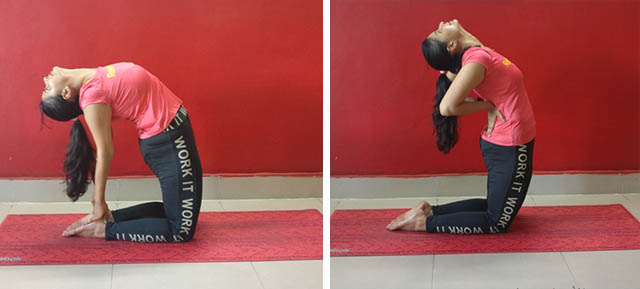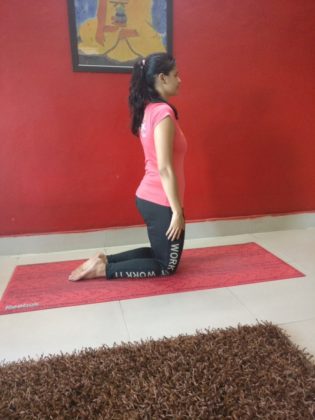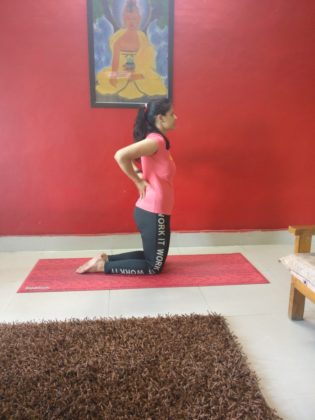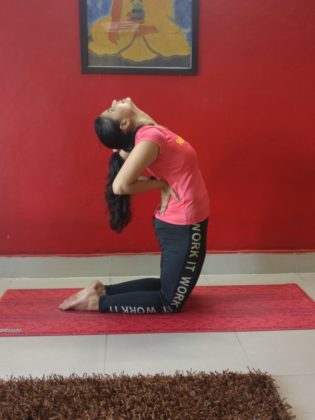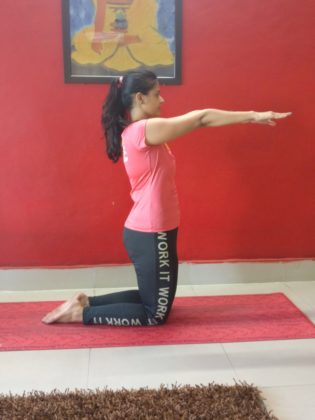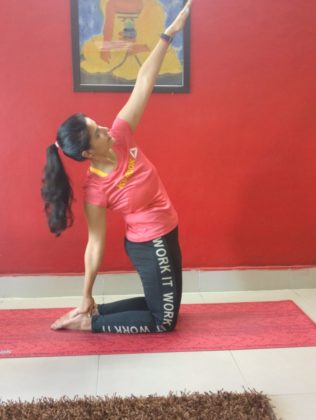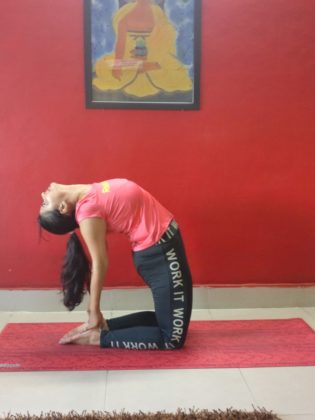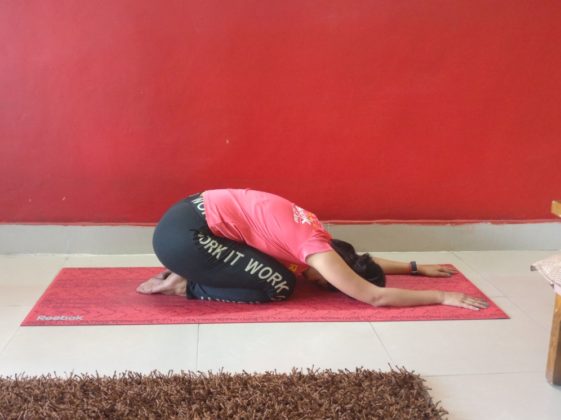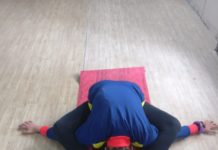Ushtra means a camel. This pose is inspired by camel’s ability to lift and bend. Camel’s back has immense strength and can lift great amount of weights. What more a camel can sail through the difficult terrains of sand by maintaining a remarkable balance. Camel pose is derived from these features of a camel and thus creates a great scope for muscle building and increasing flexibility of your back. Let’s learn how to do this asana.
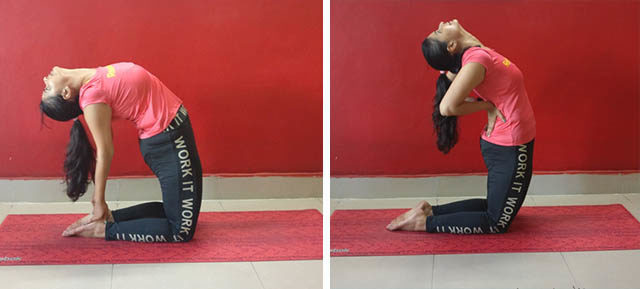
Steps:
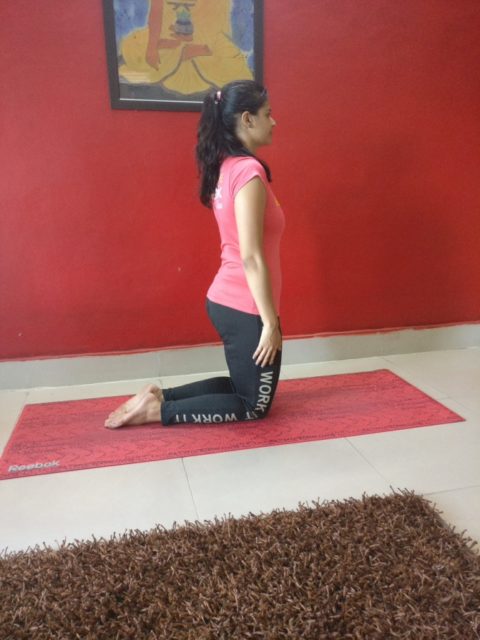
Kneel on the floor, keeping the thighs and feet together, keep your toes pointed at the back and make sure your whole feet is resting completely on the floor. Keep the breathing normal right now.
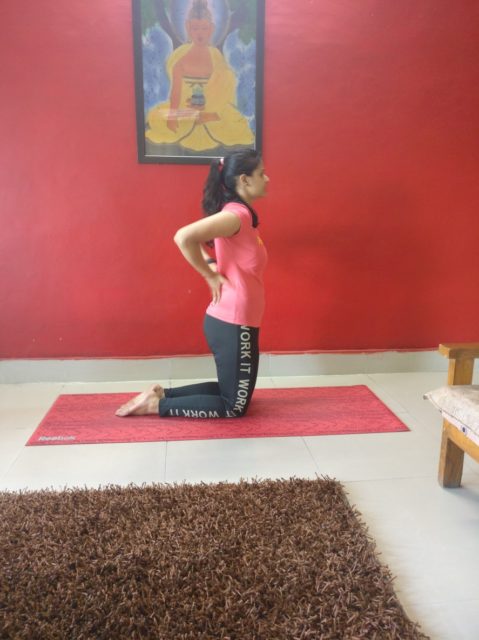
Now keep the palms on your lower back, fingers pointing down. Make a shape of L with your thighs and legs. Your knees should be perpendicular to the mat. Try to bring the elbows closer to each other, in doing so you will notice that your chest gets automatically expanded.
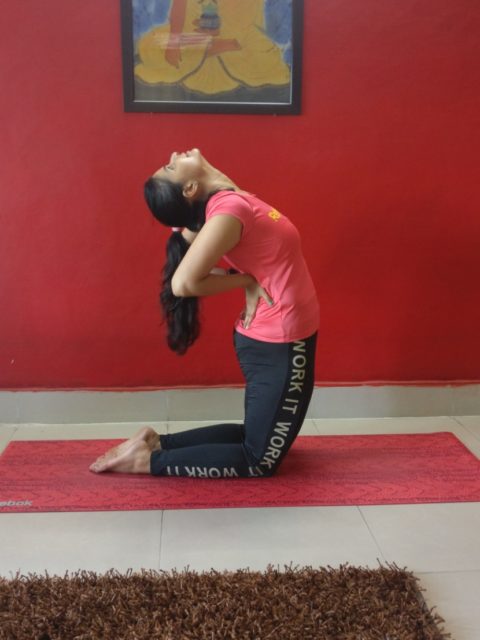
Inhale deep and stretch your chin up towards the ceiling. Remember to keep your eyes open. Stay here for a while and keep pushing your hips forward and head back to get a nice curve with your back. This is called the half camel pose or the Ardhushtrasana.
If you can easily do this asana, you can try doing the full ushtrasana following the steps mentioned below. Kneel on the floor in the similar way as stated above. Now instead of resting your palms on your lower back, take them forward and parallel to each other.
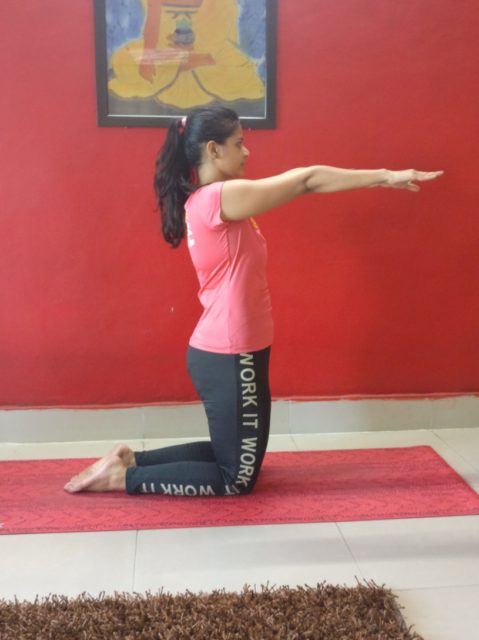
Raise the right hand above and rotate it and try to go back and hold the right ankle with it.
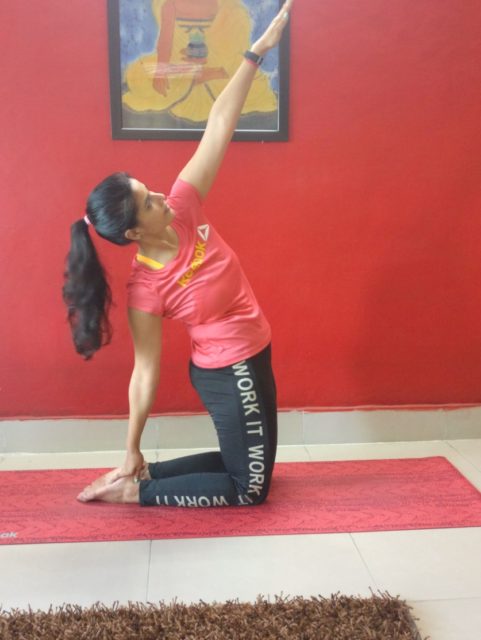
Now raise the left hand and try to hold the left ankle with it. Now expand your chest towards the ceiling, your head is leaning back. Keep the eyes open! In case you have difficulty in breathing in this posture, you can open your mouth a little bit.
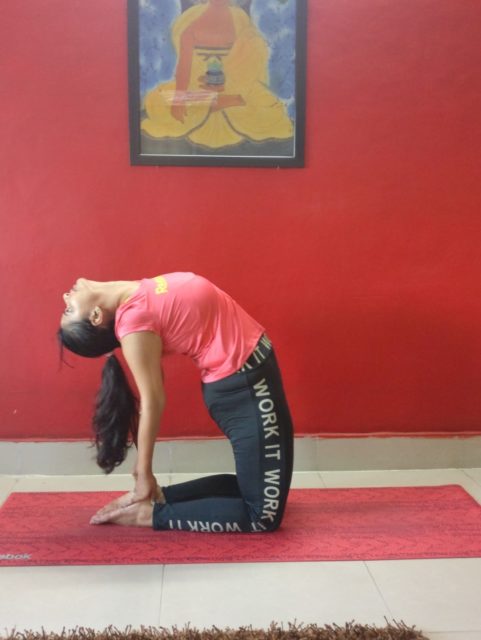
Stay there for a little while and come back by taking the left hand first and then the right. Do not rush while coming back to the normal position from this pose. You should have a good control on your breath, so try to exhale and bring the hand forward.
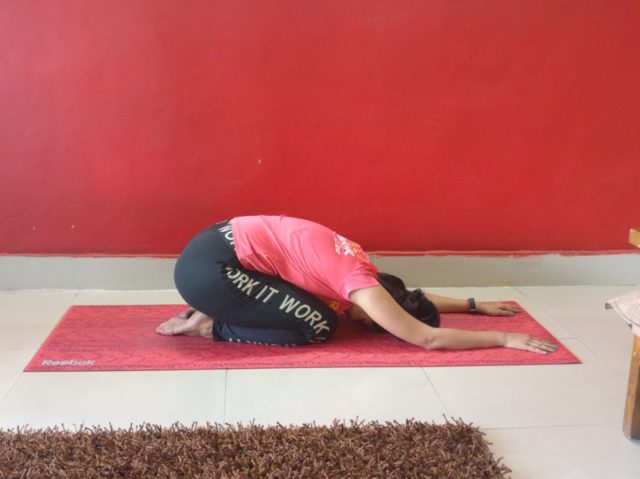
Rest in Shashankasana or the rabbit pose after this pose. (Take both the hands forward on the floor, rest your hips on the heels and take the head down too). It is necessary to give your back some minutes of relaxation after every challenging pose. Rushing in such case can lead to injuries, so listen to your body and don’t push it more than its capacity.
Benefits of Ushtrasana:
- A hunch back can affect your personality and cause great deal of problems as you grow older.
- In ushtrasana, the whole spine is stretched and toned, it relieves in erecting the hunch and making the back flexible.
- The shoulders get proper mobility and expansion, thus relieving stiffness in the neck and shoulder area.
- It’s a great chest opener that opens the lungs and increases its capacity to absorb oxygen.
- Spine becomes flexible and strong if this asana is done daily. As the spine is activated properly it refreshes the lakhs of muscles attached to it with oxygen.
Caution:
- In case of vertigo, start with Ardhaushtrasana and then as the comfort develops go for the full one.
- Do not do this asana when you have headache, sinusitis or migraine.
Preparatory poses for Ushtrasana:
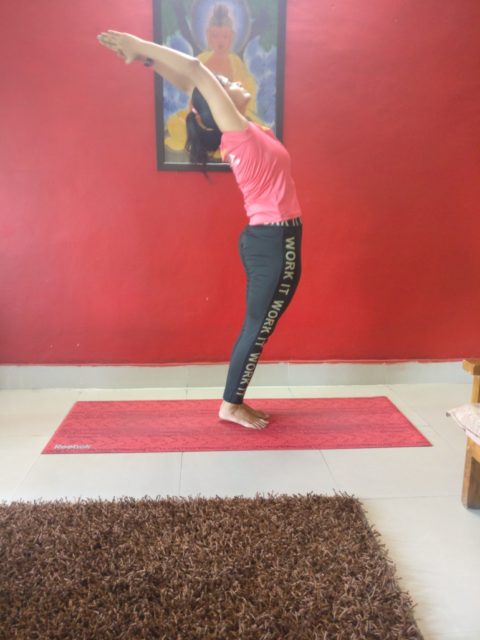
Uttanhasthasana: Keep your feet together on the mat and slowly as you inhale bring your hands up forming a Namaste. Push your hands backwards and hips forward to deepen the back bend.
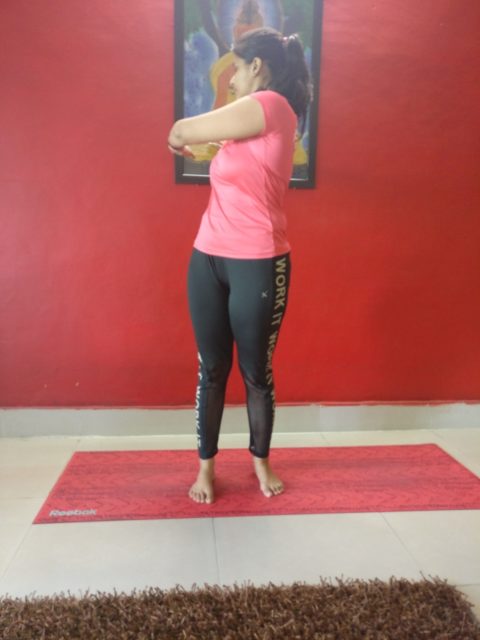
Kati Chakrasana: Stand erect on your mat. Bring both your hands forward and parallel to each other. Now slowly inhale and turn the upper part of the body towards the right side, exhale to bring it to the centre and then inhale to take it to the left. Keep the stomach stretched in and continue to do it on both the sides for sometimes.

















